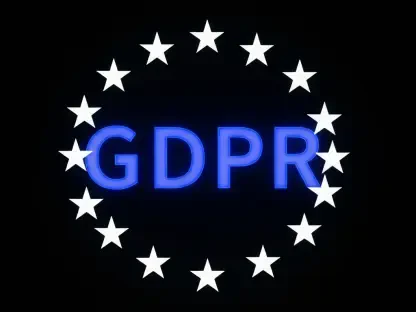Desiree Sainthrope brings her extensive legal experience to our discussion today, focusing on the pressing issue of cybersecurity within the water sector. Her insights into the WRRO Establishment Act (H.R. 2594) and the need for a collaborative approach to cybersecurity are invaluable. Let’s dive into the conversation.
Can you provide an overview of the WRRO Establishment Act (H.R. 2594)?
The WRRO Establishment Act aims to create an independent, non-federal organization tasked with developing cybersecurity requirements for the water sector. This would be done under the oversight of the U.S. Environmental Protection Agency (EPA). The goal is to ensure that the nation’s water systems are protected from the increasingly sophisticated threats posed by cyber attacks and physical security breaches.
Why did the American Water Works Association (AWWA) decide to support the WRRO Establishment Act?
The AWWA recognizes the seriousness of cybersecurity threats to water systems and understands that a collaborative approach could harness the expertise of both cybersecurity professionals and utility leaders. By supporting this Act, they aim to ensure strong federal oversight while leveraging specialized knowledge to protect water operations and customer information efficiently.
What is the role of the independent, non-federal organization proposed in the WRRO Establishment Act? How will the U.S. Environmental Protection Agency (EPA) be involved in this legislation?
The independent organization would lead the development of cybersecurity requirements specifically tailored to the water sector’s needs. The EPA’s role would be to provide oversight, making sure that the standards developed align with national security objectives and offer effective protection against threats.
What benefits do you see in having a collaborative approach to cybersecurity in the water sector?
A collaborative approach allows the water sector to draw from a broad array of perspectives and expertise, which is crucial given the sector’s complexity. It encourages shared solutions and innovations that individual entities might not be able to develop independently, ultimately leading to more robust and comprehensive cybersecurity measures.
How would this collaboration leverage the knowledge of cybersecurity experts? How would utility leaders contribute to the development of cybersecurity requirements?
Cybersecurity experts bring a technical understanding of the latest threats and defense mechanisms, while utility leaders understand the operational nuances and challenges of water systems. By working together, they can develop more practical and enforceable cybersecurity requirements that address real-world conditions.
Why is strong federal oversight important in protecting water operations and customer information?
Federal oversight ensures that there is a consistent and standardized approach to cybersecurity across different regions and utilities. It helps maintain a high level of security, ensures compliance, and can coordinate responses to threats, which is particularly important in protecting both operations and sensitive customer data.
What unique challenges does the water sector face regarding cybersecurity threats? How has the escalation of physical security breaches and cyber attacks impacted the water sector recently?
The water sector deals with a wide range of challenges, including outdated infrastructure, a lack of cybersecurity resources, and the critical nature of water services. Recent increases in cyber attacks and physical breaches have highlighted vulnerabilities, potentially jeopardizing public health and safety by threatening water quality and accessibility.
Can you explain the particular risks ransomware attacks and infiltration of online utility programs pose to public health and safety? In what ways could bad actors attempt to alter treatment chemical levels or lock a utility out of its programs?
Ransomware and other cyber attacks can have drastic consequences. Attackers might lock a utility out of its control systems, leading to operational shutdowns, or they could tamper with treatment protocols, potentially introducing harmful levels of chemicals into the water supply. Both scenarios pose significant risks to public health and safety, making preventative measures critical.
How long has the water sector been advocating for a collaborative approach to cybersecurity?
The water sector has been pushing for a collaborative approach for several years. The realization that one-size-fits-all solutions are ineffective for the diverse range of utilities—from large metropolitan systems to small rural ones—has driven this advocacy.
What is the significance of not having a one-size-fits-all approach to cybersecurity for water systems? Why would a one-size-fits-all approach be challenging for many water systems, especially those serving small and rural communities?
Every water system has unique characteristics, including size, capacity, infrastructure, and resource availability. A universal solution might not address specific vulnerabilities unique to smaller or rural systems, which often face greater resource constraints. Tailored strategies ensure more effective protection based on individual system needs.
How does the WRRO’s collaborative structure ensure that water professionals can contribute their knowledge and expertise?
By structuring the WRRO collaboratively, it ensures that water professionals have a platform to share their practical knowledge and insight directly. This input is crucial in developing standards that are not only technically sound but also implementable within the operational realities of water utilities.
What specific goals would the water sector-led body established by the WRRO aim to achieve? What types of cybersecurity standards and practices would they be developing?
The main goals include developing comprehensive cybersecurity standards that mitigate current threats and establishing best practices that enhance overall resilience. These standards would cover everything from securing operational technologies to safeguarding customer data.
What is the WaterISAC Threat Protection Act, and how does it relate to the WRRO Establishment Act?
The WaterISAC Threat Protection Act is another legislation aimed at bolstering cybersecurity within the water sector. It complements the WRRO Establishment Act by enhancing threat intelligence and sharing among water utilities, thereby creating a more informed and responsive cybersecurity environment.
Are there any other pieces of cybersecurity legislation for water systems that have been introduced recently? If so, what are they?
Yes, there have been several initiatives aimed at improving the cybersecurity posture of water systems. Some of these focus on funding for infrastructure improvements, while others aim to create frameworks for better information sharing and threat response coordination.
Do you have any advice for our readers?
Staying informed about the evolving landscape of cybersecurity and actively participating in collaborative efforts are crucial. Whether you are part of the water sector or simply a concerned citizen, understanding the importance of these measures helps advocate for stronger protections and better preparedness against cyber threats.









